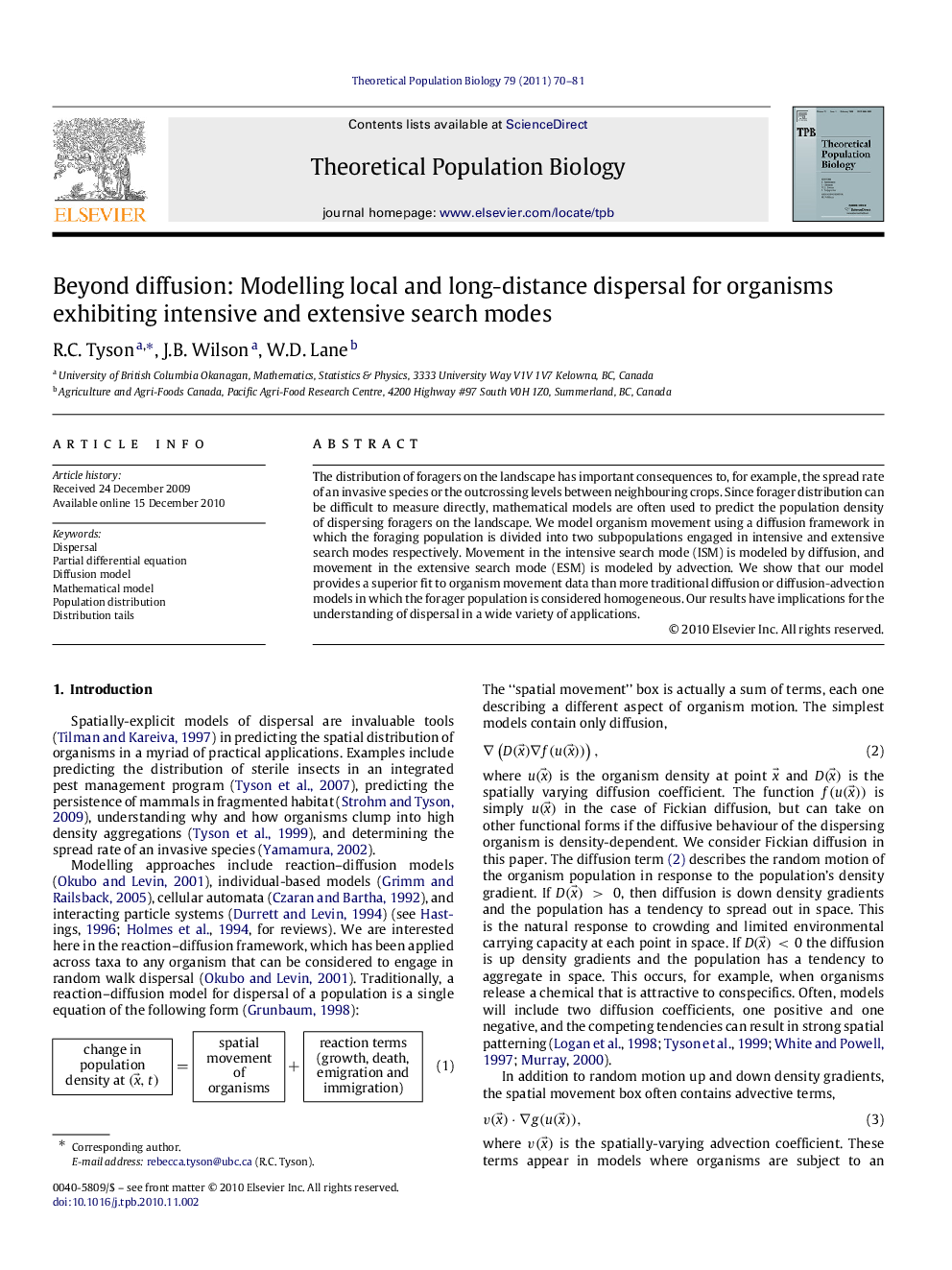| Article ID | Journal | Published Year | Pages | File Type |
|---|---|---|---|---|
| 6372452 | Theoretical Population Biology | 2011 | 12 Pages |
Abstract
The distribution of foragers on the landscape has important consequences to, for example, the spread rate of an invasive species or the outcrossing levels between neighbouring crops. Since forager distribution can be difficult to measure directly, mathematical models are often used to predict the population density of dispersing foragers on the landscape. We model organism movement using a diffusion framework in which the foraging population is divided into two subpopulations engaged in intensive and extensive search modes respectively. Movement in the intensive search mode (ISM) is modeled by diffusion, and movement in the extensive search mode (ESM) is modeled by advection. We show that our model provides a superior fit to organism movement data than more traditional diffusion or diffusion-advection models in which the forager population is considered homogeneous. Our results have implications for the understanding of dispersal in a wide variety of applications.
Keywords
Related Topics
Life Sciences
Agricultural and Biological Sciences
Agricultural and Biological Sciences (General)
Authors
R.C. Tyson, J.B. Wilson, W.D. Lane,
